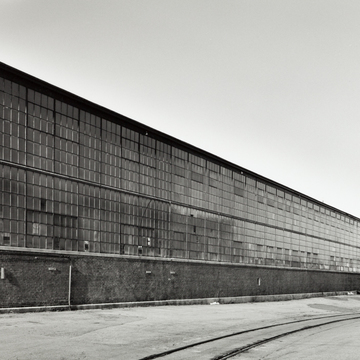The factories are best viewed from a parking area a little north of the intersection of the railroad tracks and Bourne Avenue. The brief tenancy of the Richmond brothers, Franklin and Charles, belies the significance of their venture. They moved from Providence to set up a new operation under exclusive license to use a pioneer Swedish patent for the manufacture of wood pulp paper by the sulfide process, after earlier American experiments were abandoned. The sulfide process eventually revolutionized the industry by enormously increasing paper supply while decreasing cost—and, as is now sadly apparent, also diminishing its life, as testified by the disintegration of whole libraries of modern books and journals. The cost of building the plant and developing its technology, however, led to bankruptcy and Phillips's succession. Although difficult to discern today, the Richmonds' brick plant, elaborately corbeled and initially supported by heavy timber framing (as it mostly still is) exists within Phillips's peripheral accretions. Buildings in a near-symmetrical layout originally housed the process, beginning at the river with a three-story block which was originally floorless in order to contain a row of silolike vats in which wood chips stewed in sulfuric acid to a near pulp, thence through the manufacturing process, to finishing, storage and office facilities up front. There a stubby tower (once with a high pyramidal cap) provided for stairs and corporate identity.
Eventually, two major wire manufacturing firms succeeded Phillips-Washburn: Kennecott Wire and Cable around 1935, then Okonite around 1950. Shortly after taking over, Kennecott built the warehouse building, which runs along the end of Bourne Street. It is a familiar free-span industrial type, but uncommon

